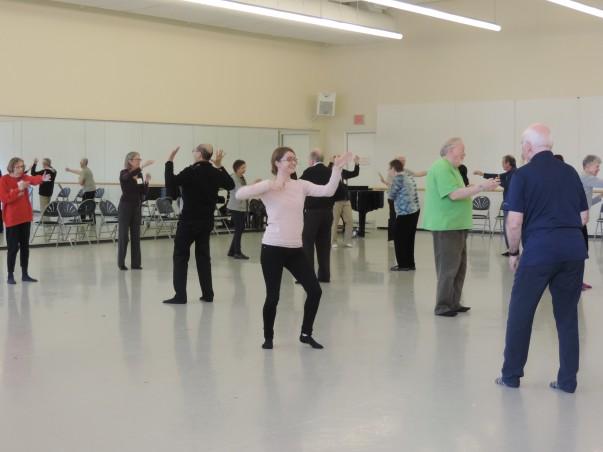By Zoe Melnyk and Skyler Ash
Three years ago, Rachel Bar started a dance class for Parkinson’s patients as a form of art therapy. In fall 2014, she branched out her classes to dementia patients as well.
As a collaboration between Canada’s National Ballet School and Baycrest Health Sciences, classes specifically for people diagnosed with dementia are held weekly at Baycrest’s long-term care facility.
“While research exploring the effects of these classes has not yet begun, anecdotally I can tell you that both programs have been met with great enthusiasm and engagement by participants,” Bar said.
Bar said that there are no concrete results from the dementia patients, but she notices improvements in the overall moods of the participants after classes.
“Having been a dancer, I know the physical and psychosocial benefits of dance,” Bar said.
The arts have gradually become more welcome in the world of medicine as coping tools for both mental and physical illnesses. Bar, a graduate student in clinical psychology at Ryerson, is a strong advocate for the use of art therapy and has been studying the effects of dance on Parkinson’s patients for the past three years with a promising outlook and will soon begin research for dementia patients.
The regular class for Parkinson’s patients is run at Canada’s National Ballet School every Tuesday morning at 10 with a maximum of 30 participants.
Of the 30 participants, volunteers are taken aside briefly before and after each class for neurological testing.
“The study is ongoing, but we have seen preliminary results demonstrating improved balance, gait and mood in participants,” Bar said.
Bar even shared her idea with the Art Health’s Health initiative last fall. AHH is a program that encourages collaboration between different medical fields in order to combine research and find creative solutions to physical and mental diseases, such as Parkinson’s.
“I provided a demonstration class where the audience could participate in a dance class designed specifically to be accessible,” Bar said.
One of the dance instructors in Bar’s class is Ashleigh Powell, 33, co-manager of community engagement.
“As dance teachers, we have an intimate understanding that art is an important part of people’s lives,” Powell said.
Besides the neurological testing and hopes for improvements in the patients, Bar and Powell also work to make the classes as inclusive as possible.

Photo: Skyler Ash
Beginners are welcome to start the entire hour and 15 minute long class within a chair, and work towards independence at their own pace. It’s not necessarily about the choreography as much as it is about the movement.
“There are no right or wrong steps, no right or wrong legs to stick out at any point in time,” Powell said.
Bill Bartlett was diagnosed with Parkinson’s four and a half years ago and has been participating in the class from the very beginning.
“The balance is helping me, and it’s also the comradery,” Bartlett said. “It’s a motivator to get me going in the morning.”
Bartlett goes to Bar’s class every week, as well as another dance class in the city.
“I go two, sometimes three times a week to the dancing with Parkinson’s group, and if I’m away and miss class, I notice a difference with my movement and my coordination,” Bartlett said.
As research grows and continues, dance will hopefully be seen as a medically relevant assistance towards parkinson’s and dementia patients.
“In order for [dance] to be recognized as an appropriate and beneficial activity for older adults by scientists and physicians, appropriate research must be conducted,” Bar said, “I hope my work will contribute to this body of research and thus help to increase the accessibility of dance in the community.”











Leave a Reply